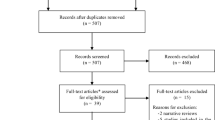Abstract
Degenerative diseases of the basal ganglia are commonly complicated by dysphagia. In 35 patients with Huntington's disease (HD), a hereditary neurodegenerative basal ganglia disease characterized by chorea, dementia, and emotional changes, an extensive battery of clinical and radiologic procedures helped to identify numerous abnormalities of deglutition. The results permitted the classification of our patients with HD into hyperkinetic (HD-h) or rigid-bradykinetic (HD-rb) groups. Although the two groups share multiple abnormalities, statistically significant intergroup differences were observed. Clincial assessmen of the HD-h cohort (30 patients) demonstrated rapid lingual chorea, swallow incoordination repetitive swallows, prolonged laryngeal elevation, inability to stop respiration and frequent eructations. In the HD-rb group (five patients), frequently observed abnormalities included mandibular rigidity, slow lingual chorea, coughing on foods, and choking on liquids. Videofluoroscopic swallowing studies (VFSS) using a variety of barium-impregnated, foods and liquids confirmed the abnormalities noted on the clinical assessment. Respiratory and laryngeal chorea, pharyngeal space retention, and aspiration were also identified. Numerous compensatory techniques introduced during videofluoroscopy benefited all patients.
Similar content being viewed by others
References
Bruyn GW: Huntington's chorea: historical, clincal and laboratory synopsis. In Vinken PJ, Bruyn GW (eds):Handbook of Clinical Neurology, vol 6. Amsterdam: North-Holland Publishing Co, 1968, pp 298–378
Sax DS, Bird ED, Gusella JF, Myers RH: Phenotypic variation in 2 Huntington's disease families with linkage to chromosome 4.Neurology 39:1332–1336, 1989
Young AB, Shoulson I, Penney JB, Starosta-Rubinstein S, Gomez F, Travers H, Ramos M, Snodgrass SR, Bonilla E, Moreno H Wexler N: Huntington disease in Venezuela: neurological features and functional decline.Neurology 36:244–249, 1986.
Thompson PD, Berardelli A, Rathwell JC, Day BL, Dick JPR, Benecke R, Marsden CD: The coexistence of bradykinesia and chorea in Huntington's disease and its implications for theories of basal ganglia, control of movement.Brain 111:223–244, 1988
Hayden MR:Huntington's Chorea. Berlin: Springer-Verlag, 1981.
Edmonds C: Huntington's Chorea, dysphagia and death.Med J Aust 53:273–274, 1966
Urquhart N, Perry TL, Hansen S, Kennedy J: GABA content and glutamic acid decarboxylase activity in brain of Huntington's chorea patients and control subjects.J Neurochem 24:1071–1075, 1975
Leopold NA, Kagel MC: Dysphagia in Huntington's disease.Arch Neurol 42:57–60, 1975
Leopold NA, Kagel MC: Swallowing, ingestion and dysphagia: a reappraisal.Arch Phys Med Rehab 64:317–373, 1983
Leopold NA, Kagel MC, Berkowitz L, Stafford S: Respiratory abnormalities in Huntington's disease.J Neurol (Berlin) 232: 87, 1985
Shoulson I, Fahn S: Huntington's disease: clinical care and evaluation.Neurology 29:1–3, 1979
Miller AJ: Neurophysiological basis of swallowing.Dysphagia 1:91–100, 1986
Jenkins N:The Physiology and Biochemistry of the Mouth. London: Blackwell Scientific, 1978
Henderson R:The Esophagus: Reflux and Primary Motor Disorders, Baltimore: Williams & Wilkins, 1980
Knott M Voss DL:Proprioceptive Neuromuscular Facilitation, 2nd ed. New York: Harper and Row, 1968
Farber S:Neurorehabilitation: A Multisensory Approach. Philadelphia: WB Saunders, 1982
Eadie MJ, Tyrer JH: Alimentary disorder in parkinsonism. Aust Ann Med 14:13–22, 1965
Blonsky ER, Logemann JA, Boshes B, Fisher HB: comparison of speech and swallowing function in patients with tremor disorders and in normal geriatric patients: a cinefluorographic study.J Gerontol 30:299–303, 1973
Robbins JA, Logemann JA, Kirshner HS: Swallowing and speech production in Parkinson's disease.Ann Neurol 19: 283–287, 1986
Schneider JS, Denaro FJ, Lidsky TI: Basal ganglia: motor influences mediated by sensory interactions.Exp Neurol 77: 534–543, 1982
Abbs JH, Hartman DE, Vishwanat B: Orofacial motor control impairment in Parkinson's disease.Neurology 37:394–398, 1987
Schneider JS, Diamond SG, Markham CH: Deficits in orofacial sensorimotor function in Parkinson's disease.Ann Neurol 19:275–282, 1986
Sessle BJ, Henry JL: Neural mechanisms of swallowing: neurophysiological and neurochemical studies on brain stem neurons in the solitary tract region.Dysphagia 4:61–75, 1989
Miller N:Dyspraxia and Its Management, Rockville: Aspen Publications, 1986
Selley WG, Flack FC, Ellis RE, Brooks WA: Respiratory patterns associated with swallowing: part 1. The normal adult pattern and changes with age.Age Ageing 18:168–172, 1989
Yassa R, Lai S: Respiratory irregularity and tardive dyskinesia: a prevalence study.Acta Psychiatr Scand 73:506–510, 1986
Samie MR, Dannenhoffer MA, Rozek S: Lite-threatening tardive dyskinesia caused by metoclopramide.Movement Dis 2:125–129, 1987
Robinson M: Tourette's disease a review.Br J Psychiatry 154:147–169, 1989
Kempster PA, Lees AJ, Crichton P, Frankel JP, Shorvon P: Off-period belching due to a reversible disturbance of oesophageal motility in Parkinson's disease and its treatment with apomorphine.Movement Dis 4:47–52, 1989
Silbiger ML, Pikielney MD, Donnor MW: Neuromuscular disorders affecting the pharynx: cineradiographic analysisInvest Radiol 2:442–448, 1967
Author information
Authors and Affiliations
Rights and permissions
About this article
Cite this article
Kagel, M.C., Leopold, N.A. Dysphagi in Huntington's disease: A 16-year retrospective. Dysphagia 7, 106–114 (1992). https://doi.org/10.1007/BF02493441
Issue Date:
DOI: https://doi.org/10.1007/BF02493441




